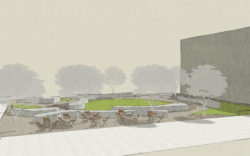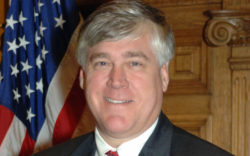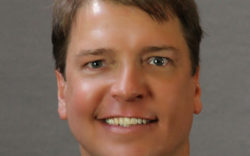November 23, 2011
ACC’s fiscal year begins in July; Mayor Nancy Denson will have to propose her FY12 budget for commissioners to approve well before that. In preparation, the mayor and commission last week discussed general goals for the budget to fulfill. Few were new:
- More street studies, in addition to the Oak/Oconee and Prince Avenue “corridor studies” now up for public comment. Commissioners had earlier asked for a study of Atlanta Highway, too, but now seem to want to look at other streets as well: Jefferson Road, North Avenue and other “gateway” entries to town and perhaps Hawthorne Avenue as well.
- Atlanta Highway is “not making a good first impression,” Commissioner Mike Hamby said. “We’ve got to do something to make that area better so it continues to attract businesses.” A successful streetscape project contributed to a resurgence in business along Baxter Street, which had deteriorated over many years. Hamby said he hopes such plans won’t drag out too long: “I’d sort of like to see it realized before I die.”
- “I think downtown needs attention,” Denson said. “Let’s just fix the holes in the sidewalk,” Commissioner Andy Herod suggested – “how about that as a starting point?” Maintenance budgets for downtown have been decreased over the years, said ACC Manager Alan Reddish: “Those are decisions that were made a few years ago.” A master plan for downtown? “I think we’re working toward something,” said Hamby, who sits on the Athens Downtown Development Authority’s board.
- Push for “a more effective criminal justice process,” moving cases more quickly so people aren’t kept waiting so long (often in jail) for trials, suggested Commissioner Harry Sims. That and other “measurable objectives” need to be tracked – that was an “adamant” recommendation by a criminal justice task force that studied the system, Sims said. New computer software to share information across departments will also help; it should be installed next year.
- Maintain the county’s infrastructure. Commissioners were especially interested in bus shelters – or the lack of them. “I see a lot of people waiting, and there’s no cover” from sun or rain, Commissioner Andy Herod said. There are plans for more shelters, Reddish said, but not at all bus stops – because shelters are expensive, and some stops don’t get much use. But all will at least get seats eventually, and concrete pads. At some stops, the county doesn’t own enough land to install a shelter, and adjacent landowners won’t sell. (The county can force a landowner to sell land for a bus stop, but never has.)
- Continue Greenway development, mapping a new greenway trail along the Middle Oconee (the river that flows by Ben Burton Park and the State Botanical Garden, but which has no adjacent Greenway trail). “We’ll be able to do all the mapping” for the greenway next year, Reddish told commissioners, with the actual trail to be built when funds become available.
- Continue water conservation efforts begun in 2009 that have lowered peak demand for water (partly by charging “tiered” rates so customers who use more water must pay extra for it). If customers continue to use less – especially in summer when demand is highest – the county won’t have to build expensive treatment plants to supply it. Peak demand is down by 17 percent, and “we have been a model for the rest of the state” in encouraging conservation, Commissioner Kathy Hoard said.
- Provide incentives to retain long-term ACC employees (although there is value, too, Herod suggested, in bringing in “new blood”). County employees haven’t had raises in three years, and are paying more for insurance; perhaps instead of across-the-board raises of one or two percent, raises should be a specific dollar amount, Denson suggested. A raise of a couple of hundred dollars would amount to more for lower-wage employees. Pensions could also be increased a bit – the pension board is “always interested in doing that,” Reddish said, but “we have to remind them that it’s not an inexpensive thing to do.”
Other budget goals included establishing a federally qualified health center, affordable housing development and continuing internships for young people.
Like what you just read? Support Flagpole by making a donation today. Every dollar you give helps fund our ongoing mission to provide Athens with quality, independent journalism.










